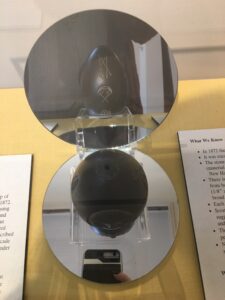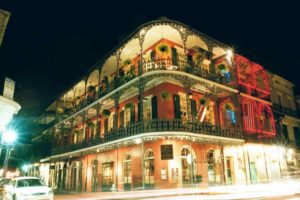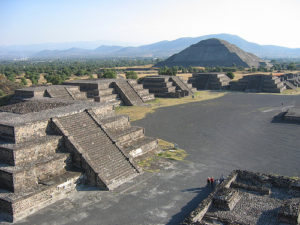By Sue Coletta
One of my recent research trips led me to the New Hampshire Historical Society and Museum. I went there to copy two diaries — one from 1880, another from 1881 — written by a close family friend of the victims and female serial killer, a man who gave a fascinating firsthand account of daily life before, during, and after the murders. Reading the handwriting is a challenge that I’m still working on.
Quick research tip: if you ever find yourself in a similar situation, it helps to photograph the handwritten pages so you can enlarge the chicken-scratch at home.
After I finished photographing the diaries, my husband and I toured the museum, and we stumbled across an intriguing unsolved mystery.
In 1872 construction workers unearthed a suspicious lump of clay near the shore of Lake Winnipesaukee (also in New Hampshire). The clay casing hid an egg-shaped stone with nine carvings, depicting a face, a teepee, and an ear of corn, along with strange geometric designs.


Amateur and professional archaeologists have speculated about the “mystery stone” ever since. At the time, the American Naturalist described it as “a remarkable Indian relic.” In the 1880s and early 1890s, sources claimed, “this stone has attracted the wonder of the scientific world, European savants having vainly tried to obtain it.”
A geological study of the stone conducted in the 1990s found it to be made of quartzite or mylonite, material not known to be otherwise present in New Hampshire. The “mystery stone” is perfectly shaped and unblemished by any distortions or markings other than the pictogram carvings. Recent examinations with a microscope suggest that the hole bored through the stone may actually have been drilled by a machine. Whether carved by hand or power tools, the stone’s manufacture indicates it lands somewhere in the mid to late 19th century. But does it?
The stone quickly gained public attention, with the New Hampshire Patriot and State Gazette, the leading newspaper in the Granite State at the time, running a piece on July 17, 1872, announcing the stone’s discovery.
With such publicity, word of the stone reached far and wide, even to European scientists, who could not discern any more about the stone’s history than the Americans. In succeeding years, newspaper stories about the stone popped up at random intervals. In 1895, the Manchester Union reported that “the strange relic has attracted much attention,” even from the likes of the Smithsonian Institute in Washington, DC. A geological survey conducted by the State of New Hampshire in 1994 failed to shed much light on the stone, either.
To this day, amateur and professional archaeologists have speculated about the Mystery Stone’s origins.
NH Historical Society writes…
The most prevalent explanation has been that the Mystery Stone is a prehistoric Native American artifact. The discovery of an unusual Indian relic was not unprecedented at the time, encouraged by a highly romanticized view of America’s native heritage developed in the mid-19th century, especially in the East where fears of Anglo-Indian conflict were generations in the past.
An increasing reverence for the power of nature combined with nostalgia for a pre-industrial America combined to elevate Native Americans to the role of “noble savages” for many Americans. Indians’ perceived ability to commune with a pristine and unspoiled environment lent an air of mystery to the natural world, suggesting that natives could somehow unlock the secrets of the universe in a way that “civilized” men and women were no longer able to do, bound as they were by an overreliance on logic and reason and wholly cut off from their more intuitive and emotional natures by the standards of society.
The anomaly of the stone’s alleged “machine-made carvings” and the fact that it was composed of a rock type not found in New Hampshire could never be explained, nor does it support the idea that the stone is of Native American origin. The native culture depicted on the stone bear no resemblance to the Abenaki, New Hampshire’s native people. The face on the stone likens more to Eskimo or Aztec culture, and the carved teepee leans more toward natives in the American West.
Some Mystery Stone enthusiasts have suggested that the stone has spiritual significance for a prehistoric native culture that once covered most of North America. If that’s true, the stone may depict the forging of a treaty between two different tribes, or it may have been part of a ritual that accompanied a water burial for a native figure of importance in New Hampshire.
Over the years, other theories as to the stone’s origin have been posited. In 1931 a letter-writer suggested to the president of the New Hampshire Historical Society that the Mystery Stone was actually a thunderstone (rocks that fall from the sky during lightening storms), calling it “the most perfectly worked thunder-stone ever discovered.”
Another more recent theory argues that it is a lodestone, a natural magnetized mineral used for navigational purposes in the 16th century as an alternative to a compass. Other theories link the Mystery Stone to numerology, aliens, massive planetary shifts, or a worldwide apocalypse.
Facts
We know the stone was found encased in clay in 1872 at Lake Winnepasaukee. The stone is either quartzite or mylonite, neither rock type found in New Hampshire. There is a hole bored through both ends, done with different sized bits — 1/8″ at the narrow end, 3/8″ at the broad end. Each bore is straight, not tapered. Scratches on the stone’s lower bore suggests it was placed on a metal shaft and removed several times (which might make sense if it’s lodestone and was used as a compass). There’s a notch or divot in the bore. Perhaps it’s some sort of “key” for mounting the stone?
The mystery…
Who made the stone?
Who carved the stone?
For what purpose was the stone made?
How old is it?
How was the stone carved, by hand or machine?
No one else has ever reported finding another stone like this anywhere in the United States. The one thing that most Mystery Stone interpreters can agree on is that it’s an “out-of-place artifact.” Meaning, it should never have been discovered in New Hampshire.
Any guesses what the Mystery Stone might be?


